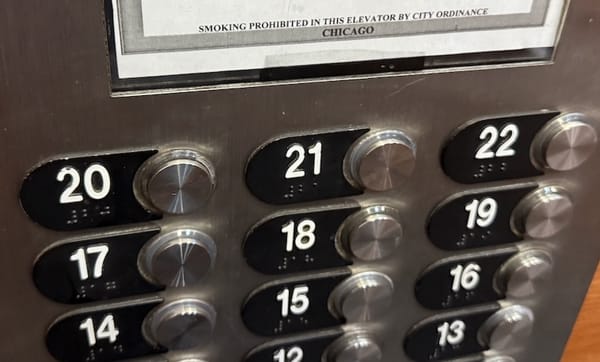Why the Mourner's Kaddish Isn't Broken in Reform Judaism
Is Kaddish broken in Reform Judaism? Or do our diverse Kaddish practices indicate a movement willing to embrace all who are in need?

As is common practice for many Reform Jews, I always stand during the Kaddish Yatom, the Mourner's Kaddish, an Aramaic memorial prayer recited at the end of every Jewish worship service to remember our loved ones in the weeks and months following their passing, and on the anniversary of their deaths. A recent article in Reform Judaism magazine and a follow-up post on the RJ Blog suggest that Reform Jewish congregations return to a more traditional practice where the only individuals who stand are mourners as recognized by the letter of Jewish law. Neither my head nor my heart agree with this.
In the article, My Idea: Let the Mourners Saying Kaddish Stand Alone, Rabbi Roz Gold suggests that only mourners as defined by halacha (Jewish law) should be standing. Her reasoning is that she felt robbed of an important piece of her mourning process when her father died, and many people who were not technically mourners stood to recite kaddish at the same services that she did. She goes on to suggest that standing when we are not technically mourners makes us less able to emotionally understand the Kaddish experience when we are "real" mourners.
In the online response, Knowing When It's Time: A Response to Rabbi Roz Gold, Rabbi Rex Perlmutter suggests that both groups could be accommodated if mourners and non-mourners were asked to stand sequentially, so that mourners would be allowed, for want of a better term (and this term is mine), their "moment".
Both pieces are well meaning. But I think Rabbi Gold's article strays too far from normative Reform Jewish practice, and Rabbi Perlmutter's post could go much farther in its defense of it.
Rabbi Gold makes a good point--traditionally, only halachically defined mourners are "supposed" to stand during Kaddish. However, after the Second World War, normative practice in Reform Judaism widened to include individuals who were not technically mourners standing and praying for the memories of the six million individuals lost in the Shoah. That practice widened even more over time to include standing in memory of people for whom Jewish law does not indicate that we must stand, including distant relatives, friends, and long-ago congregants who no longer have anyone left to stand for them.
I respect Rabbi Gold's sense of loss, but I do not agree with her contention that when we stand when we are not technically mourners, we lose our sense of the meaning of Kaddish. In my synagogue, our practice is for all of us to rise and stand together no matter the reason we are choosing to stand. It is my practice to stand at every Mourner's Kaddish. Yet in the same synagogue I have also stood for both of my parents, and I assure Rabbi Gold and anyone else that I did not somehow lose my ability to be emotionally impacted by the memory of their deaths and my memorial act of standing and saying Kaddish. I could be wrong, but I don't see how that kind of jadedness is humanly possible, and I think the contention that it is possible gives our fellow congregants far too little credit for being able to understand and navigate their emotional lives and worship experiences.
Moreover, in Reform Judaism, we are not driven--much less commanded--by traditional interpretations of Jewish law. Just because halacha says only specific people should stand does not mean halacha is prescriptive for our practices surrounding Kaddish. In our movement, we respond to mitzvot (commandments) both at all and in a manner as we find ourselves personally moved to do so. This is why our practices regarding standing for Kaddish have evolved over time, and because of this our movement is able to honor the emotional needs of a wider group of bereaved individuals.
I don't think suggesting that we hew closer to halacha during Kaddish adequately respects the basic Reform Jewish value of coming to our level and style of practice on our own, a process aimed at creating a religious community of informed individuals. I do think it's a somewhat dangerous suggestion, though. If you really want to follow the letter of Jewish law, the only people for whom we may mourn are our parents, our children, our spouses, and our siblings--and the only people allowed to stand would be men. So were we to adopt truly halachic standards for Kaddish, Rabbi Gold would not be allowed to stand and recite the prayer at all.
To avoid such needlessly limiting worship experiences is why we are Reform Jews in the first place. It is why we tolerate a diversity of practices in our movement. To be able to stand during Kaddish, Rabbi Gold must tolerate the differing emotional needs of other bereaved congregants. Neither party's act of standing is necessarily within the letter of Jewish law. Yet both are important.
Rabbi Perlmutter seeks to honor that dual importance in a response that upholds the basic Reform Jewish value of informed practice. His suggestion mirrors practices common in some Reform shuls--at some of our synagogues, mourners are asked to stand one by one as the name of their loved one is called (or alternatively asked to stand all at once), followed by an invitation a moment later for others who wish to stand to do so.
Yet even this practice can leave loose emotional ends in the sanctuary. What happens at a service when there are memorial names real aloud but no mourners? Many of us stand during Kaddish for exactly this reason--so that there will always be someone standing for our fellow congregants who have passed on and have no one present, or perhaps even no one left, to remember them. To us, we are mourners. Under practices like the one suggested by Rabbi Perlmutter, we would not be considered so. Should we stand when mourners are asked to stand, even though the intent of separating the two groups is for only "real" mourners to stand at this point? Or should we stand with "everyone else", thus making it clear that an entire group of our congregational family has no one to remember them?
It is a Jewish value not to lend to the public embarrassment or shaming of others. With this in mind, I choose always to stand during Kaddish to ensure that no embarrassment accrue to the memory of people who have no one there to stand for them. There have been times when I have been the only person standing in the sanctuary other than the clergy. At those moments, to my Jewish mind, making a point out of communicating that I am not technically a mourner by dint of Jewish law sends but one completely unnecessary message: "No one cares enough anymore about my memory to stand for me."
I find that message heartbreaking. Yet, given declining affiliation rates and numerous merged congregations--not to mention defunct congregations who ask other synagogues to adopt their memorial lists (my synagogue is such an adopter)--this is a common thing to happen.
Last week, someone emailed these articles to my shul's rabbi requesting that we try having mourners stand first to make it clear who the real mourners are. At services on Friday night, we did just that. Congregants with names on the Yahrzeit (memorial) list were asked to stand first, followed by anyone else wishing to stand for their own reasons. I know this may work well in other synagogues. In ours, it just made the "everyone else" part feel awkward. We did not repeat it at services the following morning.
If we are to respect our basic values as Reform Jews, normative RJ practice cannot be all or nothing. It cannot be exclusionary toward the religious and emotional needs of our fellow Jews. Nor should it be divisive, calling out the needs of one group, or placing one group's needs above those of another. Not for halachic reasons (a really shaky basis for decision-making in our movement), nor for any others.
Truly, the "real" mourners are all of us. At one time or another during the Mourner's Kaddish, we will all be motivated to stand for both traditional and non-traditional reasons. Not only should we be allowed to continue to do so in our movement (and, of course, will do so, anyway), but Rabbi Gold's concerns notwithstanding, we will know what to do at those times, as well. We will stand if we are moved to stand and feel that standing is a valid choice. We will remain seated if we are moved to remain seated.
We will make different choices at different times because we are living, dynamic beings affiliated with an equally living, dynamic religious tradition. And because we are not so disconnected from ourselves that we have become unaware what is in our hearts. And in doing so we will strengthen Judaism's ability to embrace both those who came before and those who are here with us now.
As Reform Jews, the width of our tent is measured in the width of our embrace. At the most tender of times, may our embrace always be a wide one.




